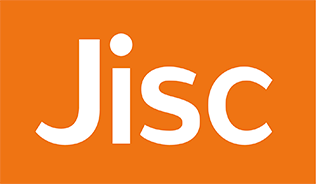Comparison of McKenzie Extension v/s William’s Flexion Exercises in Mechanical Back Pain among Medical Students
Keywords:
Activities of Daily Living, Exercises, Low Back Pain, Medical studentsAbstract
Background
This study compared the effects of William’s Flexion and McKenzie’s Extension exercises on reducing mechanical back pain in medical students aged 18 to 25. Stress, prolonged study and work hours, poor posture, and physical inactivity are some of the causes of the high prevalence of low back pain in this population.
Methods
A total of 30 students were divided into Group A, which performed ‘McKenzie Extension’ exercises, and Group B, which performed ‘William’s Flexion’ exercises, in a rigorous six-month randomized controlled study. The Numeric Pain Rating Scale measured pain levels before and after the exercise intervention. For within-group comparisons, paired sample t-tests were used, and independent t-tests were used for between-group analysis.
Results
Both exercise groups’ pain levels decreased after 3-weeks of consistent home exercises. In contrast to William’s Flexion group, the McKenzie Extension group did, however, have a statistically significant (p<0.05) decrease in low back pain.
Conclusion
McKenzie’s Extension exercises are more effective than William’s Flexion exercises in reducing mechanical back pain in medical students.
References
Will JS, Bury DC, Miller JA. Mechanical low back pain. American Family Physician. 2018;98(7):421-8.
Zanatelli MM, Guimarães AV, Storte GR, Velloso N, Emidio MV, Peruzzetto MC, de Santis Bastos PA. Prevalence of low back pain in Port of Santos workers. Revista Brasileira de Medicina do Trabalho. 2021;19(2):173.
Karran EL, Grant AR, Moseley GL. Low back pain and the social determinants of health: a systematic review and narrative synthesis. Pain. 2020;161(11):2476-93.
Sachdeva A, Athavale A, Gupta S, Tiwari P. A Study on Neck Pain and Iow Back Pain among the Undergraduate Students of a Medical College in Bhopal, India. Journal of Community Health Research. 2022.
Ganesan S, Acharya AS, Chauhan R, Acharya S. Prevalence and risk factors for low back pain in 1,355 young adults: a cross-sectional study. Asian Spine Journal. 2017;11(4):610.
Wei LS, Sivapiragasam B, Ansari RM. Low Back Pain among Pre-clinical MBBS Students: An Inevitable Peril in the Age of Online Education. Malaysian Journal of Medicine & Health Sciences. 2022;18(4).
Yaribeygi H, Panahi Y, Sahraei H, Johnston TP, Sahebkar A. The impact of stress on body function: A review. EXCLI journal. 2017;16:1057.
Peck J, Urits I, Peoples S, Foster L, Malla A, Berger AA, Cornett EM, Kassem H, Herman J, Kaye AD, Viswanath O. A comprehensive review of over the counter treatment for chronic low back pain. Pain and Therapy. 2021;10:69-80.
Morlion B. Pharmacotherapy of low back pain: targeting nociceptive and neuropathic pain components. Current Medical Research and Opinion. 2011;27(1):11-33.
Chou R, Deyo R, Friedly J, Skelly A, Hashimoto R, Weimer M, Fu R, Dana T, Kraegel P, Griffin J, Grusing S. Noninvasive treatments for low back pain.
Brämberg EB, Bergström G, Jensen I, Hagberg J, Kwak L. Effects of yoga, strength training and advice on back pain: a randomized controlled trial. BMC Musculoskeletal Disorders. 2017;18(1):1-1.
Hayden JA, Ellis J, Ogilvie R, Stewart SA, Bagg MK, Stanojevic S, Yamato TP, Saragiotto BT. Some types of exercise are more effective than others in people with chronic low back pain: a network meta-analysis. Journal of Physiotherapy. 2021;67(4):252-62.
Mircea P. The effect of William’s and McKenzie exercises on the reduction of chronic non-specific low back pain. J Sports Med Phys Fitness. 2017;57: 572–579.
Ponte C, Pillastrini P, Foschi F, et al. Comparison between the Williams and McKenzie methods in their therapeutic effect in patients with low back pain: preliminary observations. Clin Ter. 2002;153: 369–373.
Cherkin DC, Deyo RA, Battie M, et al. A comparison of physical therapy, chiropractic manipulation, and provision of an educational booklet for the treatment of patients with low back pain. N Engl J Med. 1998;339: 1021–1029.
Clare HA, Adams R, Maher CG. A systematic review of efficacy of McKenzie therapy for spinal pain. Australian journal of Physiotherapy. 2004;50(4):209-16.

Downloads
Published
Issue
Section
License
Copyright (c) 2023 Khadija Usman, Amir Malik, Hassaan Nasir, Mahnoor Khursheed

This work is licensed under a Creative Commons Attribution-NonCommercial 4.0 International License.













